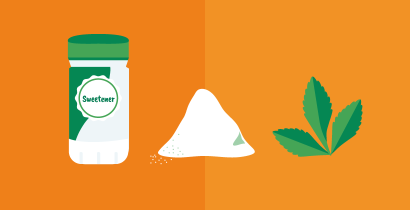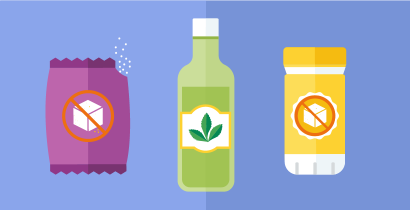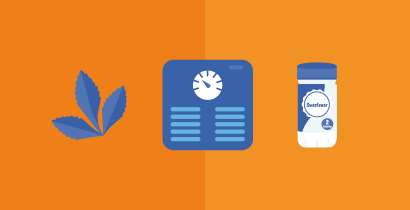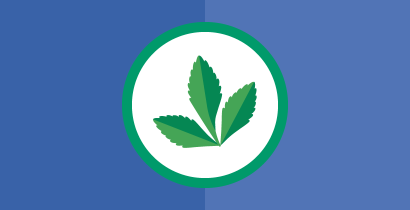Stevia (Q&A)
Last Updated : 08 December 2013What is Stevia?
Stevia (Stevia rebaudiana Bertoni) is a herb native to Central and South America. It belongs to the same family of plants as sunflower and chicory. The plant was described and given its name by the Italian-Swiss botanist Moisés Santiago Bertoni in 1901. Stevia is still cultivated today in Paraguay, Mexico, Central America, but also in Japan, Malaysia, South Korea, and China. The latter is the largest stevia grower in the world.
How is the stevia plant used?
Widely cultivated for its sweet leaves, stevia has been used for centuries by the indigenous South American natives as a traditional sweetener, added to herbal teas and other beverages.
What are steviol glycosides and stevia extracts?
The sweetness of the stevia plant is due to the production of sweet components called steviol glycosides, which can be extracted from the stevia plant. The leaves of stevia contain at least 10 different steviol glycosides. The two main sweet tasting glycoside compounds are stevioside and rebaudioside A (Reb A). Stevia extracts taste 200-300 times sweeter than sugar, which means that a very small amount of stevia sweeteners can achieve the desired sweetness.
How is the sweetener extracted from the stevia plant?
The stevia plant is usually grown to 1 meter in height. Afterwards, it is hand-harvested and the leaves are dried. Stevia extracts are obtained by water extraction (steeping the dried leaves in water, filtering and separating the liquid from the leaves and stems), and further refining of the sweet components of the stevia leaf.
Are stevia extracts safe?
In April 2010, the European Food Safety Authority’s (EFSA) Panel on additives (ANS panel) assessed the safety of steviol glycosides and gave a positive safety opinion. An Acceptable Daily Intake (ADI) of 4 mg per kg body weight per day was established for steviol glycosides, a level consistent with that already established by the Joint FAO/WHO Expert Committee on Food Additives (JECFA) in 2008. The Panel pointed out that this ADI could be exceeded by both adults and children if these sweeteners are used at the maximum levels proposed by the applicants. In January 2011, EFSA reviewed its previous assessment concluding that although the revised exposure estimates are slightly lower than those of the April 2010 opinion, adults and children who are high consumers of foods containing these sweeteners could still exceed the ADI established by the Panel if the sweeteners are used at maximum levels.
On 11 november 2011 the European Union granted final regulatory approval for the use of stevia extracts in foods and beverages.
There are no known side effects or allergies from the use of stevia extracts in food and beverages. Furthermore, stevia showed to be safe for consumption by diabetics.
What are the benefits of stevia extracts?
Stevia sweeteners are natural and contain no calories, allowing consumers to enjoy sweet taste without concerns about weight gain. They do not replace the sugar naturally present in foods, but they can be an excellent substitute for added sugars and thus an effective aid in weight management when used in place of calorie-containing sweeteners in the diet.
Stevia sweeteners do not increase blood glucose levels and therefore can be considered suitable for diabetics. For people with a rare genetic disease known as phenylketonuria (PKU) stevia would be a phenylalanine-free sweetening option.
Are stevia extracts already approved and used in food products around the world?
Stevia sweeteners are approved for use in many countries including Japan, Korea, Taiwan, China, Russia, Mexico, Argentina, Colombia, Peru, Paraguay, Uruguay, Brazil and Malaysia. Japan and Korea are currently the largest markets for stevia. In late 2008, the USA, Australia and New Zealand approved the use of certain stevia extracts for use as a food and beverage ingredient.
The European Commission granted final regulatory approval for the use of stevia extracts in foods and beverages on 11 November 2011.
References:
Joint FAO/WHO expert committee on food additives (June 2008)
EUFIC Food Today No.69 (10/2009). Stevia: a natural sweetener with potential
International Stevia Council: Information on Stevia
For more information:
International Food Information Council Foundation: Information on low-calorie sweeteners



